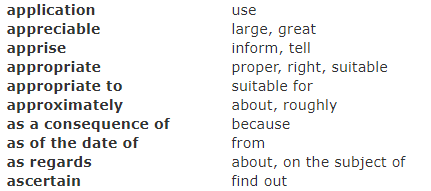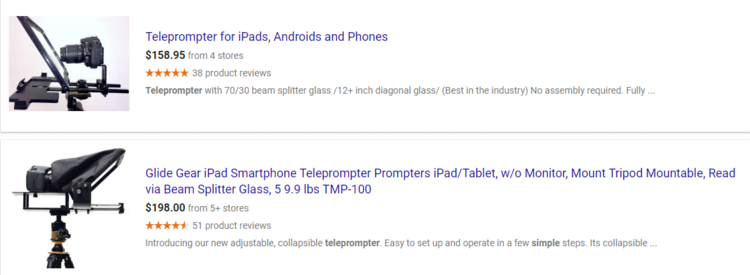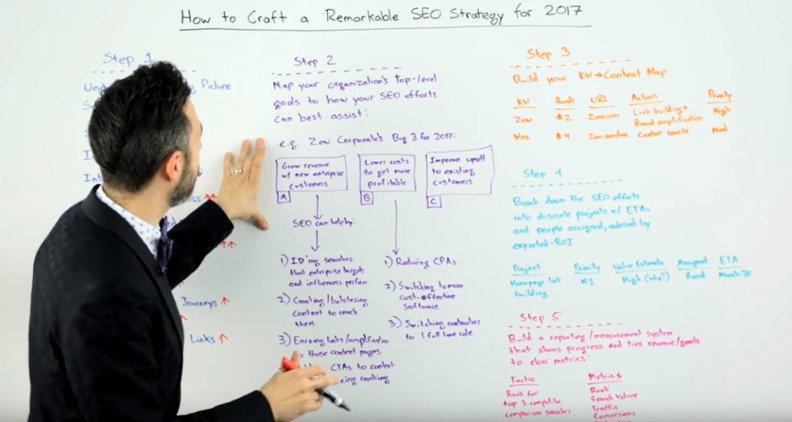All great video marketing campaigns start with great video scripts. As I’ve learned first-hand over the course of this year, writing dozens of video scripts for all our in-house video projects, the amount of effort you put into pre-production (read: script-writing) is directly correlated to the quality of the end product. The better the script, the better the end product.
Need a little help with your video script writing skills? Here are my six best tips for writing effective video scripts.
1. Identify your target viewer
When you first get the green light to create video marketing content, you’ll probably feel tempted to start cranking out scripts right away. Here’s why that’s a mistake: Without a crystal clear picture of the person you’ll be targeting with your videos, your content will lack focus. So the first step towards writing effective video scripts is identifying your target viewer.
Because you’ll be using your video content to attract and engage people qualified to become your customers, your target viewer should look practically identical to your buyer persona—the imaginary, thoughtfully crafted character who represents your company’s ideal customer. If you’ve already created a buyer persona, that’s great! Go ahead and use that person as your target viewer. If you haven’t sketched out your buyer persona yet, here are the basics.

The purpose of creating a buyer persona—who, although not technically real, is very much based on the characteristics and needs of real people—is to make your product or service more marketable. After all, if you don’t know who your product or service is for, your marketing messages will be ineffective—especially the messages communicated through your videos. Here’s the information you’ll need to create your buyer persona (and your target viewer):
- Demographics: What’s their age, gender, occupation, relationship status, parental status, education level, and income bracket?
- Behaviors and interests: What do they do on a regular basis? How do they like to spend their free time? What matters most to them?
- Goals: What are they trying to accomplish? What’s their definition of success?
- Pain points: What’s keeping them from achieving that success? What problems need to be solved in order for them to succeed?
Only when you’ve answered these questions will you be able to write focused, effective video scripts that attract and engage the right people.
2. Write like you speak
If you’re anything like me, you’ll sit down to write your first video script with a somewhat reasonable yet entirely false thought floating around your head: Writing a script is basically the same as writing a blog post, right?
Nope. Although the goals behind video marketing and blogging are essentially the same—to build your brand, engage your prospects, generate leads, and so on—the actual, finished products they yield are drastically different. Simply put, what sounds natural in someone’s head as they’re reading a blog post does not necessarily sound natural as they’re watching a video.
The more natural the speakers in your videos sound, the clearer your message will be. Therefore, when you sit down to write a script, you need to write like you speak.

Shout-out to the Plain English Campaign.
Like most skills, this will develop with practice; the more video scripts you write, the more easily you’ll be able to write with a cadence that sounds natural when spoken aloud. When you’re just starting out with script-writing, however, you need to check yourself proactively and regularly. Otherwise, you’ll start the shooting process too soon and find that the script you were so proud to have written sounds really, really awkward.
My advice? Read every single sentence back to yourself—out loud. If it sounds weird to you, it’ll most likely sound weird to your audience. Keep at it until you’ve managed to communicate your ideas in a way that comes across clearly through spoken word.
3. Keep your paragraphs short
Whether or not you have a teleprompter—we highly recommend them for those who have the budget—this tip is important. By dividing your script into a series of short, bite-sized paragraphs (we’re talking four or five sentences at a maximum), you set yourself up for a much easier shooting process when the time comes to bring your script to life.

Plenty of simple teleprompters are suitable for smartphones and tablets!
If you don’t have the budget for a teleprompter, dividing your script into small chunks isn’t so much a choice as it is a requirement. The more information you ask your speakers to memorize for each take, the more takes you can expect to do. Provided that you don’t have infinite time to produce your video content—and that your speakers don’t have infinite energy—you’ll want to make the shooting process as efficient as possible.
Even if you’re fortunate enough to have a teleprompter, limiting your paragraphs to three or four sentences each is still a good idea. True—reading from a teleprompter is far easier than reciting from memory, thus increasing the amount of information your speakers can successfully communicate in a single take. Nevertheless, mistakes happen. People stumble over their words. The more you ask someone to read during a single take, the more opportunities there are for them to mess up; the more they mess up, the more frustrated they get. In turn, greater frustration leads to worse performance and lower efficiency.
Bottom line: Short paragraphs make for easy shooting days.
4. Structure your information logically
Earlier, I argued that you need to write like you speak in order to clarify the information you’re sharing and improve viewer comprehension. After all, if your prospects walk away from your videos having learned nothing, what was the point of investing your time and money in the creation of that content?
The ROI of your video marketing efforts is tied directly to how much your prospects learn. Contrary to what you may assume, making educational video content isn’t a matter of simply sharing as much information as you possibly can. From a viewer comprehension perspective, just as important as the information you share is how you organize that information. Even the most insightful content is practically useless if it’s illogically organized.
Through writing both video scripts and blog posts, here’s what I’ve found to be the best approach. Once you’ve settled on the overarching topic of the video you’re creating, structure the script such that it starts with the most general information and gets progressively more specific and complex. Before you get into the nitty-gritty of whatever subject matter you’re tackling, make sure to give your viewers the solid foundation they need to fully comprehend everything that’s to come.

Think of Maslow’s hierarchy of needs. Start with the essentials and go from there.
Let’s use an example. Say you’re a marketer at a gym. You want to use educational video content to build the gym’s brand and connect with people interested in physical fitness—that is, people who make good candidates for gym memberships. For your first video, you want to talk to your viewers about protein shakes. If you were to dive straight into specific ingredients, measurements, and nutrition facts, that would be pretty jarring, right? To create a much more helpful and holistic learning experience for your viewers, you’d want to begin by talking about the pros and cons of protein shakes, when they should and shouldn’t be used, and so on. Only after you’ve laid that foundation should you get into the specifics.
5. Keep visual aids top-of-mind
When it comes to video content, most people want to see more than a static talking head. After all, a video that shows nothing but a person speaking for several minutes straight gets pretty darn boring. Plus, you shouldn’t ignore the fact that many people are visual learners. Without some form of images or graphics to accompany your speakers, your video content won’t be as effective as it needs to be to leave lasting impressions on your prospects. In turn, you won’t drive the ROI you’re looking for.
All that being said, you can’t shoehorn graphics into your videos purely for the sake of doing so; you should never include something that doesn’t legitimately enhance the viewer’s learning experience. To ensure that your use of graphics is seamless and effective, I recommend consciously creating opportunities for visual aids while writing your scripts. In other words, don’t write an entire script and subsequently comb through it in search of opportunities for visual aids. Instead, try to write with a cadence that naturally lends itself to the use of aids.

The genius of Moz’s Whiteboard Friday series lay in the use of visual aids.
As an example, let’s return to the hypothetical in which you’re creating video marketing content for a gym. Technically, when scripting the introductory section of the video about protein shakes, you could simply say “Protein shakes are divisive among the fitness community” and leave it at that. Alternatively, you could say “Regularly drinking protein shakes comes with a number of costs and benefits.” I’d argue that the latter is substantially better because it gives you an opportunity to naturally insert a visual aid—a T-chart, most likely.
One last point: Finishing a script and subsequently combing through it to find places to insert graphics is a pain in the neck. If nothing else, take my advice to save yourself a headache.
6. Create opportunities for shareable clips
My final tip for writing video scripts is related to the promotion of your finished products. Think about it: Once you have a polished video that’s ready for publication on your website and YouTube channel, what better way to drum up interest than by sharing short, enticing clips on social platforms like Twitter and Instagram?

Via Oberlo.
As is the case with visual aids, you should have social media clips at the top of your mind as you’re writing your video scripts. If you script an entire video without thinking about its promotion on social media, you’ll force yourself to find shareable clips after the video’s been shot and edited—so you’ll run the risk of working with sub-par source material. This, in turn, could lead to not-so-enticing clips and a lack of engagement with your promotional posts.
If you consciously create shareable moments when writing your script instead, promoting the final video will become a whole lot easier and a whole lot more effective. Let’s return to the example of the protein shake video one more time. Sure—you could end the video by simply listing the ingredients required to make your personal favorite protein shake. However, a far more shareable piece of content would be a clip of you actually making that shake.
As you’re writing your script, regularly stop to ask yourself a question: “Will anything I’ve scripted so far make for a compelling social media post?” If the answer is no, make a concerted effort to change that. You (and your boss) will be happy you did.
Don’t mail it in when writing video scripts!
I get it: Writing scripts erases some of the luster of video marketing. There’s something really exciting about immediately getting behind (or in front of) a camera and simply creating. Sitting down at a laptop and thinking rationally about what’s going to enable the best user experience possible … not so much.
And yet, it has to be done. Whether you’re adopting video marketing as a channel so you can spread brand awareness or drive sales, you have to think really carefully about what you want to say and how you want to say it. Considering the amount of time, resources, and expertise it takes to create high-quality video marketing content, you really can’t afford to wing it.
Thoughtful, meticulous video scripts are the key to delivering the best results you possibly can. Using these six tips, you should be able to do just that.
And if you’re looking for a low-budget way to produce quality marketing videos from home, we’ve got just the post for that.







